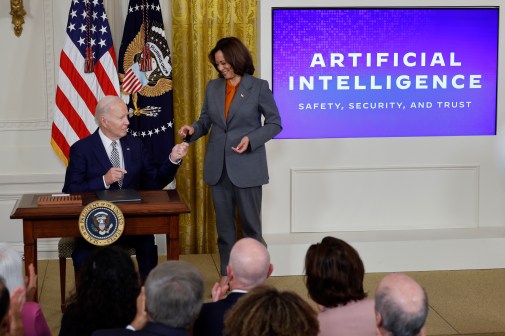New DOD cyber workforce strategy aims to ease revolving door between government and industry

In order to attract and retain more cyber talent in the future, the Department of Defense wants to reevaluate the personnel system that creates barriers to leaving service and reentry.
The just released DOD Cyber Workforce Strategy aims to provide a roadmap for how the department will grow and keep a cyber workforce in an increasingly competitive field amid a global shortage of cyber talent that organizations are vying to recruit and retain.
Officials frequently decry how they can’t compete with private sector salaries, bemoaning the fact that the department spends the time and energy to train personnel, only to lose them years later to industry.
In a changing environment, officials want to adapt the personnel system to make it easier for people to enter government, leave for industry to gain additional experience and perspectives, and possibly come back.
“Permeability, the ability to move between the different sectors — there has to be a change,” Patrick Johnson, director of the workforce innovation directorate for the DOD Chief Information Officer, told reporters Thursday. “We want to move on rewarding longevity … to a system or allow for individuals to go out for three years and come back without penalty and make those transitions back and forth. We’re looking at ways how can we allow them to go out and become more developed [with] capability, experience and skill sets they’re not receiving here and then how can we benefit by bringing them back in at a later time.”
The strategy will examine this, Johnson said, noting the forthcoming implementation plan will lay out how the department moves forward.
“How we can partner with industry, do rotational assignments. If someone goes, how do we keep tabs so we’re constantly reaching back to them and saying, ‘Hey, there’s an opportunity to come back, would you consider coming back, and here’s what we can do for you,’” he said.
Others explained the National Guard and reserve components could be a useful track for those looking to come in and out of government, on the uniformed side.
“On the military side, the ability when you leave the military to go into the reserves or National Guard and then work whatever job skill you’re working in there. And then how do we access that to bring you back onto active duty, for instance, for shorter periods of time?” Mark Gorak, principal director for resources and analysis for the DOD Chief Information Officer, said during the press briefing. “You could be for a project focused a month, two months, or a year even — and how do we make that more easily accessible and how do we track that talent across the department is some of the areas we’ll be looking at.”
Gorak noted that the Pentagon wants to maintain relationships with those that leave the department because it might be working with them in another capacity later down the road.
“We train the talent, we bring them in, we give them experience, we give them a great mission. And if they choose to leave, we want to maintain those relationships to have that flow back and forth because they could be back with us for detail or for a small project or even come back as a contractor,” he said. “I view that as the one team, one fight national challenge.”
Officials said on the uniformed side, there aren’t many issues with recruiting when it comes to cyber. The challenge is retaining service members, as well as recruiting and retaining civilian staff.
“There has to be a cultural shift in the department in how we acquire talent and how we manage it,” Johnson said. “We do a very good job … on the military side, [although] there’s always room for improvement. But on the civilian side, we have to fundamentally change how we manage that talent and look at it from an enterprise.”
The key is identifying the workforce, he added.
The strategy aims to use data to tackle workforce shortfalls and provide decision-makers better informed metrics.
“We’re making data-driven decisions in how we manage this workforce. And then when we go back and we say to the services and we say to our components, ‘We need to increase here, we need to increase there,’ it’s not us going down and forcing an issue,” Johnson said. “It’s highlighting a clear problem and having the data to allow leadership to make the decisions they need and then providing the tools and mechanisms they need to do it.”
The strategy lists four pillars for improving DOD’s workforce. They include: identifying workforce needs and requirements; recruiting the talent needed; developing and understanding individual and team performance requirements; and retaining by creating incentive programs.




